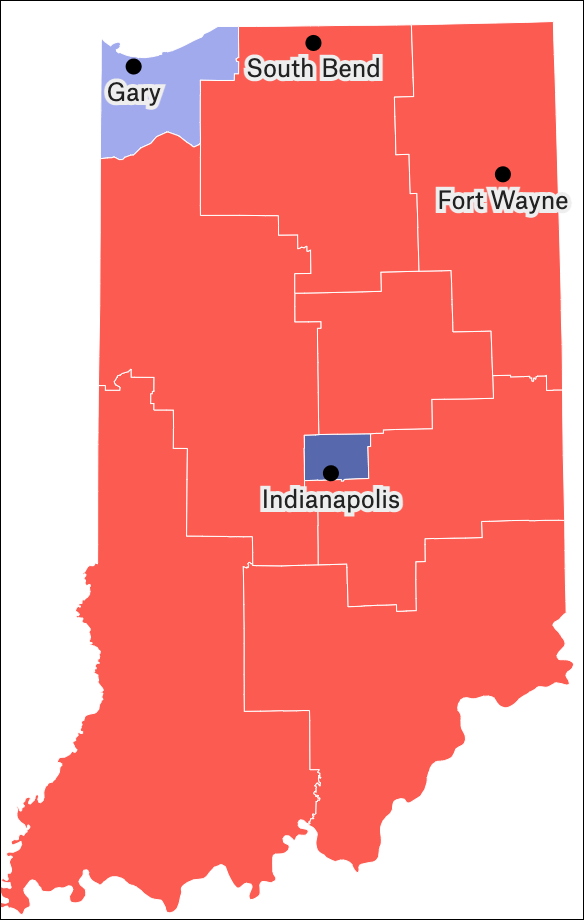By Jim Ellis
Jan. 14, 2022 — Three-term Indiana Rep. Trey Hollingsworth (R-Jeffersonville) announced Wednesday that he will not seek re-election in the autumn, becoming the 12th Republican to retire in this election cycle. The congressman’s retirement decision means at least 46 seats will be open in the 2022 House election.Saying, “I ran for Congress to return this government to the people from the career politicians who had broken it, and I will be damned if I become one in the process,” Hollingsworth will draw his congressional career to a close after six years. When he first ran in 2016, he pledged to serve no more than four terms. He expresses a desire to return to the private sector.
Indiana’s 9th District occupies most of the state’s southern sector and for years was a Blue Dog Democratic area. For 17 terms, Congressman Lee Hamilton (D), who became chairman of the House Intelligence and Foreign Affairs Committees, represented the district. Democrat Baron Hill succeeded him in 1998, and served until his defeat at the hands of Republican businessman Mike Sodrel in 2004. Two years later, Hill recaptured the seat and held it until his second loss in 2010, this time to attorney Todd Young (R) who is now the Hoosier State’s senior senator.
Since the Young victory in 2010, the 9th has performed as a solid Republican district. Donald Trump carried in the seat in 2016 with a 61-34 percent margin, and again in 2020 with a similar 61-37 percent vote spread.
Under the new Indiana congressional map, the new 9th moves to the north and east, but retains its population centers in Jeffersonville, Clarksville, and New Albany, all across the Ohio River from Louisville, KY, and in the college town of Bloomington where the Indiana University resides.
Dave’s Redistricting App rates the new seat as a 59.7 percent Republican domain, while the FiveThirtyEight statistical site projects the new IN-9 with an R+30 rating, up from R+27 on the current map. The Republican primary is expected to be crowded and competitive. The Indiana candidate filing deadline is Feb. 4 for the May 3 statewide primary.
Continue reading


